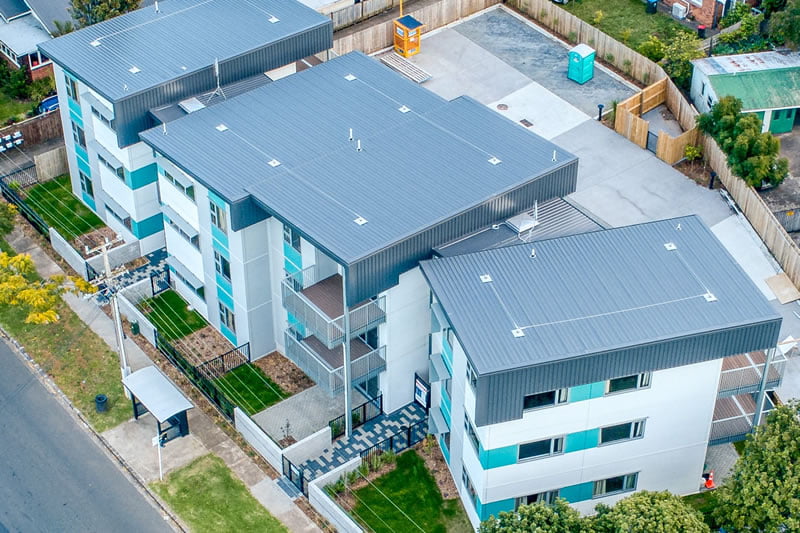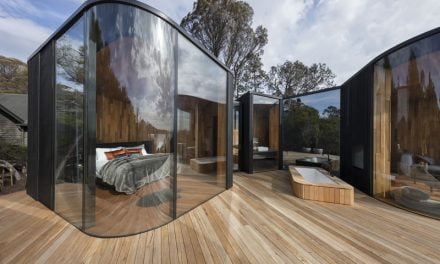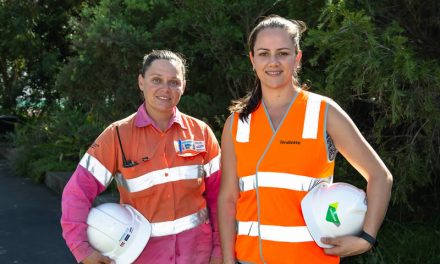Broad-scale campaigns for Federal Government investment in housing represent opportunities for a secure future.
In the 1950s, under Menzies, social housing and affordable housing were seen as basic government roles in Australia. Since the 1980s, however, Commonwealth expenditure on housing has skidded downwards, as has the number of annual public sector commencements (save for a one-off leap in the post-GFC Rudd/Gillard terms).
Across Australia, multiple voices are calling for this trend to be reversed. The Federal Government’s own research shows the pressing need – the 2021 Australian Infrastructure Plan, launched in September, identifies social housing as a key piece of infrastructure that will “support Australians to enjoy a healthier, safer, more connected and fulfilled quality of life”.
It notes in its executive summary that “over the next 15 years, it is projected Australia will need almost 730,000 new social housing properties. Currently, only 4% of Australia’s housing stock is social housing, compared to the OECD average of 6% [sic: the correct figure is 6.9%]. Investment in quality social housing should be a central part of a sustainable, inclusive economic recovery, including job creation.”
However, the same plan puts the onus for providing those properties onto state and territory governments. Compass Housing Services recently released a report calling for Federal Government intervention to help meet housing needs, saying that the scale of the shortfall was already beyond that of the states to manage alone. This call is echoed by Everybody’s Home, a coalition of individuals and partner groups ranging from major charities such as St Vincent’s and Anglicare to Domestic Violence Victoria, tenants groups, councils, housing providers and more.
Neoliberal commentators depict housing support as an impost on the taxpayer, but the fact is that spending on social housing represents enormous overall public savings – from lower healthcare costs and higher work engagement for people benefitting from public housing to security, better lifestyles and more disposable income or savings for workers who benefit from affordable housing schemes (including nurses being able to afford to live near the hospitals where they work).
Although social housing programs may slow housing price rises (historically, some of our biggest housing projects came at the same time as some of our biggest house price rises), that’s hard to argue against too strongly, given the projected 20% annual lift this year and the desperate need for increased investment in Australian businesses and entrepreneurship rather than real estate.
Then there is the perilous position of many borrowers: a recent report from UNSW, Housing: Taming the Elephant in the Economy, says national household debt has risen from 70% of GDP in 1990 to almost 185% in 2020, exposing a ticking economic time bomb should interest rates rise in the future. Nearly 70% of the leading economists and housing experts behind the report called for a national housing policy at the Federal level.
Women are particularly exposed, especially those over 55, many of whom are widowed, divorced or escaping family violence and who are the fastest-growing cohort of homeless.
In the UK, the Confederation of Timber Industries has played a significant role in lobbying government to increase the use of timber in the delivery of UK housing stock, particularly in social housing. Working as part of their Net Zero Now campaign, CTI has shown how offsite timber construction delivers buildings quickly, cost-effectively and safely, with superior intrinsic environmental benefits at every stage of the process and in the final structure.
It’s not just words: timber is revolutionising UK social housing. A far cry from the council estates of old, recent projects include the timber-framed Goldsmith Street in Norwich, which won the 2019 RIBA Prize for the best building in the UK. Designed to Passivhaus standard, which helps low-income residents manage their bills, there are 45 homes and 60 flats on the 1.2ha site, with a shared communal garden and play area running through the centre of the scheme. The structures are brick-clad, but behind the bricks are prefabricated timber wall frames filled with high-performance cellulose insulation, adding to the building’s environmental credentials.
Closer to home, Australian firms have been selling into New Zealand’s Kainga Ora – Homes and Communities social housing scheme, which has multiple large-scale ongoing projects underway. Last month’s Panelisation: Part 1 story looks at successful projects Timber Building Systems (TBS) has delivered for builder IMB in that scheme.
But in Australia, we still lag behind. It’s not that we lack the expertise: multiple successful private multi-res projects have been delivered in timber. Victoria has also seen successful public projects, with Big River Group and Tilling providing timber-based systems for the DHHS development at Stokes and Penola Streets, Preston all the way back in 2017-18.
Political will, on the other hand, has been less forthcoming. The Victorian and NSW governments have made commitments to dramatically up their social housing spends in their 2021 budgets, but whether those commitments survive the current Covid resurgence is anyone’s guess. The Federal Government delivers only $1.6bn to the states and territories for social and affordable housing as part of the National Housing and Homelessness Agreement. That’s just 8.125% of the $13bn they gave in JobKeeper to businesses whose turnover increased.
As the UK and NZ experiences have shown, strong investment in quality public housing leads to highly desirable community outcomes, but it can also lead to long-term, highly predictable and secure lines of work for builders, fabricators and timber suppliers.
Even if you have zero interest in the public good, better architecture or driving down net carbon in construction, the need for 730,000 units over 15 years should be enough to have you writing to your local member and working with industry groups to push the Australian Government into serious social housing policy reform and investment.
For more, read the Compass Housing report here and the UNSW report here or visit https://everybodyshome.com.au, https://cti-timber.org/campaigns/net-zero-now/ and www.infrastructureaustralia.gov.au/publications/2021-australian-infrastructure-plan
For a practical approach, watch the WoodSolutions webinar.
Image: The Victoria Street development in Onehunga, NZ, was the first social housing project TBS worked on with IMB for NZ’s Kainga Ora scheme. Photo courtesy Timber Building Systems.












